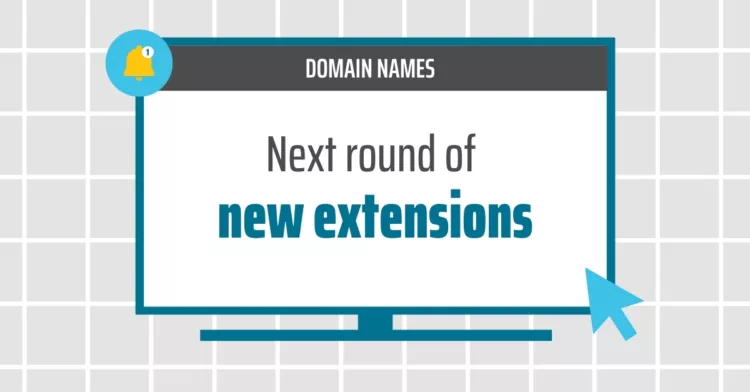Next round of new extensions aka ICANN’s vaporware

The ICANN community is trying to start the next round of new gTLD applications, but their quest for perfection has caused delays. They have initiated several policy development processes to ensure the next round is flawless, but this has led to setbacks. However, the Subsequent Procedure working group has acknowledged this issue and proposed a model where new gTLD procedures would be handled in rounds, allowing policy development to continue without halting the program.
Perfect is the enemy of good
As the saying goes, "Perfect is the enemy of good," and this sentiment has proven true for the ICANN community as they strive to initiate the next round of new gTLD applications. While efforts have been made to ensure that the next round will be flawless, the quest for perfection has caused delays and setbacks. The last round of new gTLD applications that created no less than 1200 new internet extensions occurred 11 years ago. Since then, the ICANN community has initiated several policy development processes to ensure that the next round will be perfect.
My esteemed colleague and ICANN hall of fame legend Jeff Neuman has compiled a list of those:
Discussion Group of the GNSO to create a new rounds issue report (2015), a final issue report on Subsequent Procedures (2015),an independentRights Protection Mechanism Review report (2015), a Final Report on Mitigting the Risk of DNS Namespace Collisions (2015), an ICANN internal new gTLD Program Implementation report produced (2016), a Global Consumer Survey (2016), a Statistical Analysis of DNS Abuse in gTLD report (2017), a Root Stability study (2017), an Independent Review of the Trademark Clearinghouse (2017), a Competition, Consumer Trust and Consumer Choice Review Team report (2018), a Name Collision Analysis Project commenced (2018), a Rights Protection Mechanisms Phase 1 PDP Report reviewing the new gTLDs rights protection mechanisms (2020), a Final Report on the new gTLD Subsequent Procedures Policy Development Policy (2021), the commencement of an expedited policy development process on Internationalized Domain Names (2021-present) anOperational Development Phase Scoping Document (2021), Name Collision Analysis Study 1 published (2021), a Final Report from the ePDP on Specific Curative Rights Protections for International Governmental Organizations (2022), and finally a New gTLD Subsequent Procedures Operational Design Assessment (2022)
However, this quest for perfection has proved Montesquieu’s aphorism truer than ever. In what must have been a self-awareness moment, the Subsequent Procedure working group acknowledged the existence of this very issue, which it is ironically part of. In their report, they are promoting a model where all future new gTLD procedures would be handled in “rounds” separated by predictable periods. During those periods, the policy development process would continue. Still, the changes to the program would only apply to the round following the entry into force of the new or amended policies. The PDP would not halt the program, as has been the case since 2015.
Finally, moving forward(?)
During the meeting in Cancun, the ICANN Board adopted a series of recommendations to “the start of the implementation process for the next round of new gTLDs”.
The Board also instructed ICANN to deliver a comprehensive implementation plan no later than 1 August 2023. This document will include a work plan, information for the infrastructure design, timelines, and anticipated resource requirements to achieve the necessary work to open the next round of gTLDs.
Although not a milestone, as ICANN itself qualifies it as the “beginning of the preparations”, it nonetheless constitutes progress when put in context.
.brand
In parallel, the brand registry group started a very vocal lobbying awareness effort to gain sufficient attention from potential applicants to push ICANN to move forward. According to their proposal, if their recommendations to expedite and improve the next round were followed, it could start by April 2025.
Amongst those recommendations are a tiered application system distinguishing between simple and complex applications and a staggered payment plan of the USD 240.000 application fee to ICANN (the 2012 USD 185.000 fee has been adjusted to the current value of the US dollar).
However, this proposal eludes the fact that the Governmental Advisory Committee insists on having specific issues resolved before a new round can occur. Amongst those are:
- the development of targeted policy development processes on DNS abuse;
- the prohibition or regulation of closed generics to prevent applicants from restricting domain name registrations under an extension composed of a generic word; and
- ICANN’s commitment not to hold auctions to decide between applicants for the same extension
Conclusion
The brand registry group has also been lobbying for changes to expedite and improve the next round, but a more realistic launch date would likely be early 2026. Overall, it seems that the ICANN community is slowly but surely making progress towards initiating the next round of new gTLD applications.
ICANN's fight against DNS abuse
Related articles:
